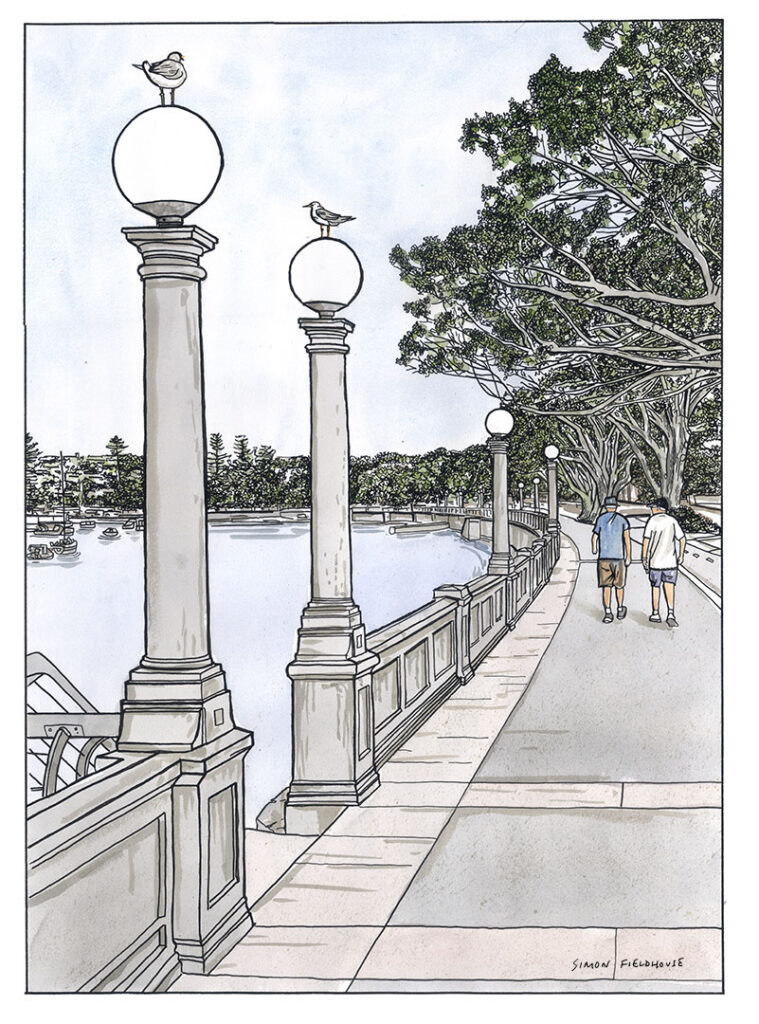
Rose Bay Promenade
Rose Bay Promenade in Sydney stands as a picturesque testament to the city's rich maritime history, offering residents and visitors a captivating view of the harbor and a serene waterfront experience. At the heart of this scenic location lies a significant architectural marvel – the historic sea wall. This essay explores the history of Rose Bay Promenade and delves into the intricate details of its sea wall construction, highlighting its importance in shaping the local landscape and preserving Sydney's coastal heritage.
Rose Bay, situated on the eastern shores of Sydney Harbor, has a storied past dating back to the early days of European settlement in Australia. Originally inhabited by the indigenous Gadigal people, the area witnessed significant changes with the arrival of British colonists in the late 18th century. Rose Bay became a hub for maritime activities, serving as a port for shipping and trade.
The transformation of Rose Bay into a fashionable suburb began in the late 19th century when wealthy families built grand homes along the waterfront, attracted by the scenic beauty and accessibility to the city. Over the years, Rose Bay evolved into a popular destination for leisure activities and seaside retreats, prompting the development of the iconic Rose Bay Promenade.
The construction of the sea wall at Rose Bay Promenade represents a crucial chapter in the area's development. The need for a protective barrier against coastal erosion and rising tides became evident as the community expanded and waterfront properties gained popularity. The sea wall project aimed not only to safeguard the shoreline but also to enhance the visual appeal of Rose Bay and provide a secure space for recreational activities.
The sea wall at Rose Bay Promenade is an engineering marvel, blending both functionality and aesthetics. The construction materials and techniques employed reflect the expertise of the builders of that era. Large stone blocks, meticulously arranged and anchored, form a robust barrier that withstands the relentless forces of the ocean. The design, inspired by Victorian and Edwardian architectural styles, seamlessly integrates with the surrounding landscape, creating a harmonious balance between nature and human intervention.
Beyond its practical purpose of preventing erosion and protecting the coastline, the Rose Bay sea wall holds cultural and historical significance. It serves as a tangible link to Sydney's maritime heritage, connecting present-day communities with the challenges and triumphs of the past. The sea wall stands as a symbol of resilience, a silent witness to the changing tides of time, and a reminder of the efforts made to shape and preserve the coastal landscape.
Rose Bay Promenade and its historic sea wall exemplify the synergy between human ingenuity and the natural environment. As Sydney continues to evolve, these structures remain integral to the city's identity, providing a tangible connection to its maritime roots. The preservation of Rose Bay Promenade and its sea wall not only ensures the physical safety of the coastal area but also honors the enduring spirit of the communities that have thrived along its shores for generations. As residents and visitors stroll along the promenade, they not only enjoy the scenic beauty but also become part of a living legacy, appreciating the intricate history etched into the stones of the iconic sea wall.